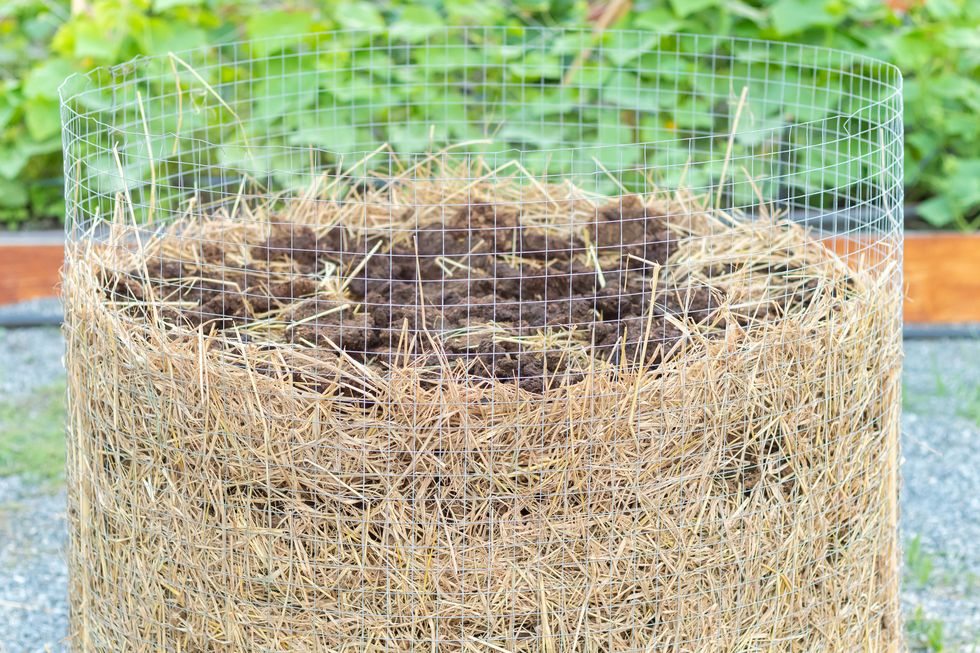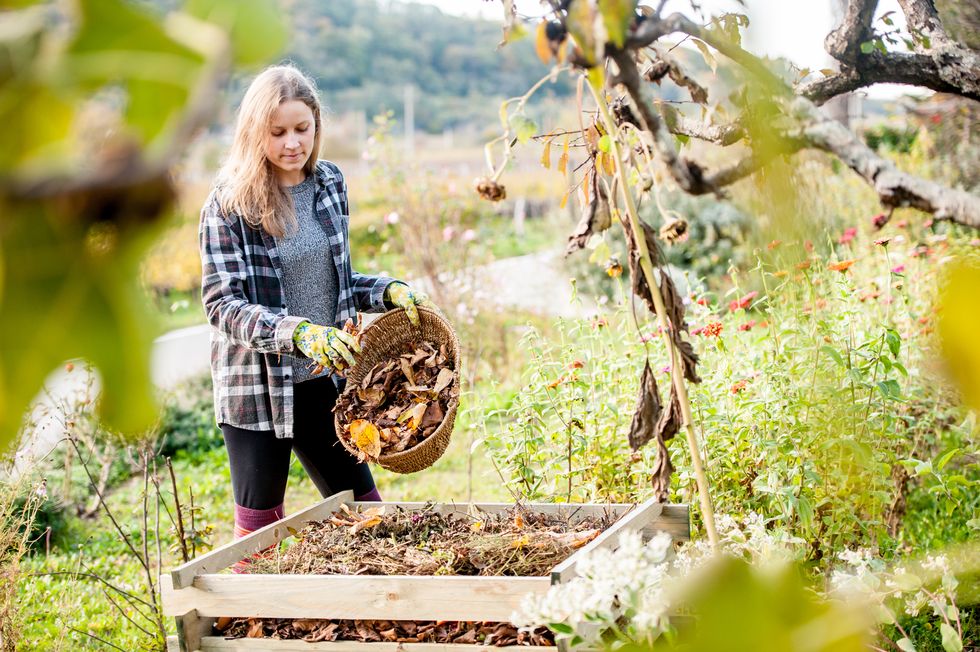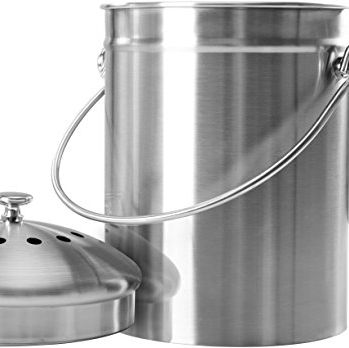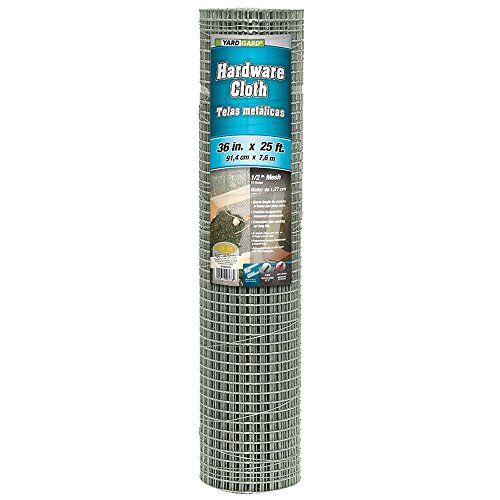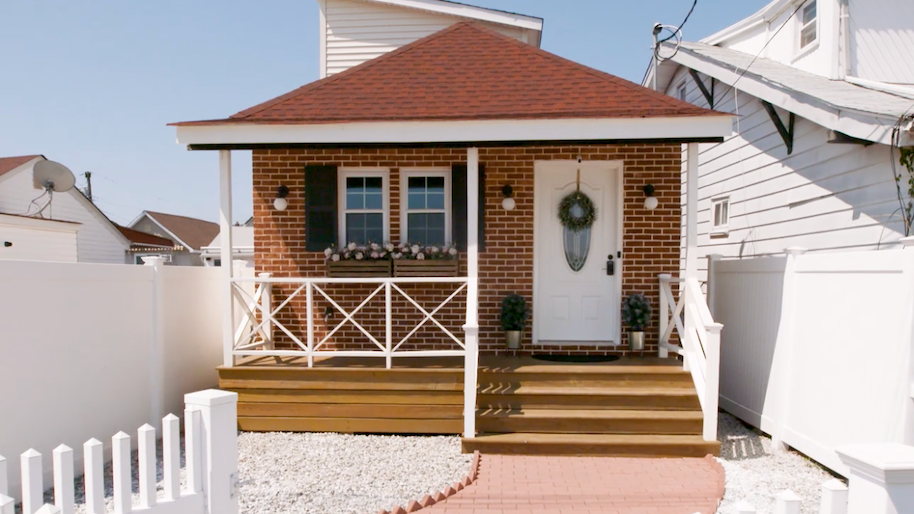There’s no need to haul all your household trash and yard waste to the curb or landfill. Instead of throwing out all the good stuff, you can make compost! Compost improves soil structure and provides nutrients for plants, all from stuff you were going to toss. Plus, it’s not as difficult as you think, as there are lots of different ways to make it happen. And you can be as involved (or not) as you want with your compost pile or bin. After all, the microbes do all the work.
Here’s how to build your own DIY compost bin and make compost for your garden:
Build a bin
Find a level spot in the yard to place your bin; it’s also better in a shaded area so the compost stays somewhat moist. To make the easiest bin ever, the University of Missouri Coop Extension suggests creating one with 3-foot-tall galvanized 1” chicken wire or 1/2-inch wide hardware cloth. Cut a 10-foot length, and form it into a circle. Posts pounded into the ground give it stability, but a wire bin without posts is easy to lift when the compost is ready. You can also use snow fencing (about a 13-foot length) with four metal corner posts hammered into place to form a square. If you’re looking for an even simpler small-scale method, drill holes in a the top and sides of a lidded garbage can or a large plastic tote, or in a 55-gallon plastic barrel with lid (which can be rolled every few days to mix the compost).
Or make a pile
A bin is neater, but it’s not the only way to make compost. If you aren’t feeling the DIY bug, make a simple compost pile. It should be about 3 feet wide and 3 feet high. At least once a week, use a garden fork or compost turning tool to mix it and add oxygen to the pile to speed decomposition. When you turn it, add veggie and fruit scraps to the center of the pile. If you don’t turn it, the food waste may attract rodents.
Or dig a hole or trench
If making a pile still seems like too much work, here’s an even easier way to go: Bury your non-fatty food waste in the soil at least 8 to 12 inches deep (to keep animals away) directly in the garden. Or dig a trench alongside your garden about a foot wide and deep, packing with leaves and yard waste in the fall. In the spring, turn the decomposed material out and work into the beds.
Add the right stuff
Whether it’s in a bin or pile, your compost needs a combination of “brown” and “green” waste. Brown waste includes dead leaves, twigs, or dryer lint. Greens are nitrogen-rich sources such as grass clippings, fruit and veggie peels, and coffee grounds. No-no's for your compost? Dog or cat feces, meat or fish scraps, or grease and dairy products in the pile. Check out a complete list of what’s compostable and what’s not here. Make sure nothing added to the pile is bigger than 2 inches in size, or it will take much longer for the microbes to do their work.
Keep tabs on the process
Decomposition slows down if the moisture level isn’t right; squeeze a handful of material to check. If a drop of water comes out, the compost has the correct level of moisture. And be patient. It takes a year or two to produce compost if you’re hands off and let nature do its thing. But you’ll have compost in a few months if you aerate weekly. Either way, you’ve kept a whole heap of waste out of the landfill and converted garbage to gardener’s gold.
Follow House Beautiful on Instagram.

